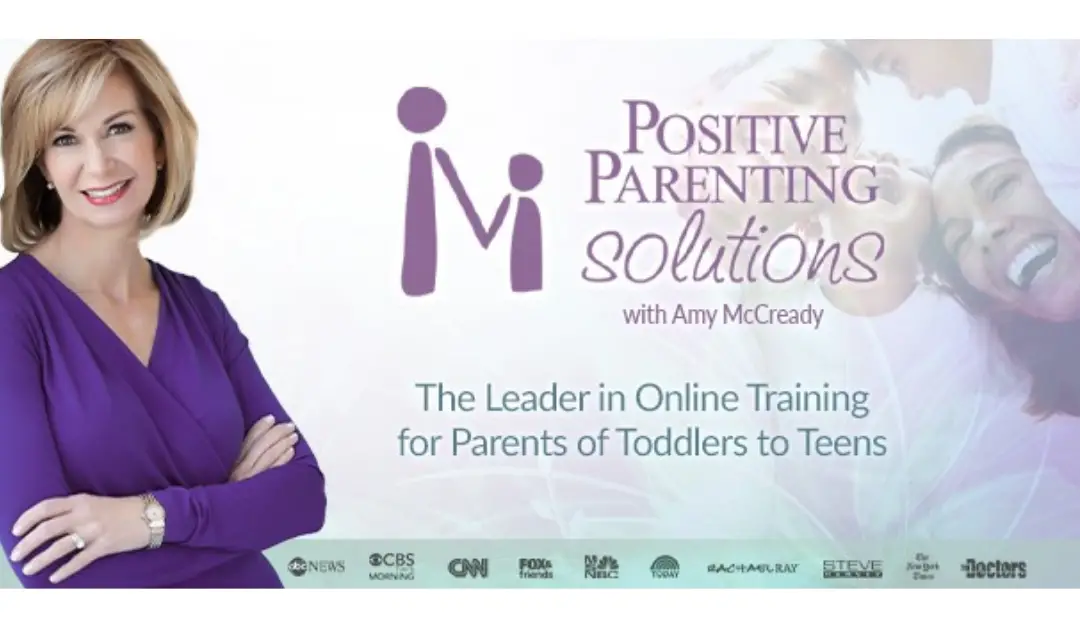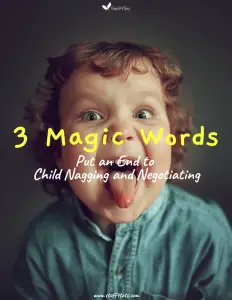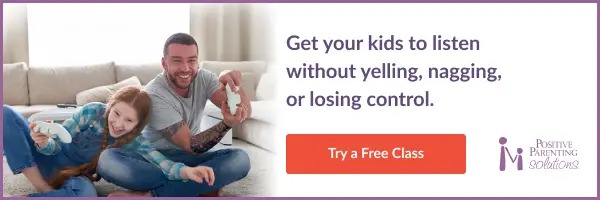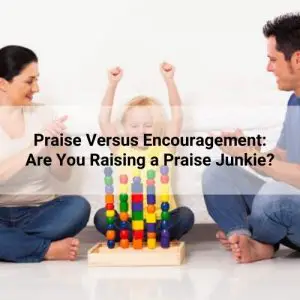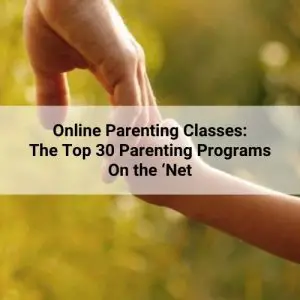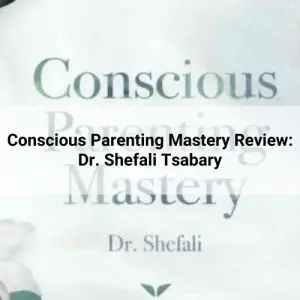Positive Parenting Solutions by Amy McCready is one of the most popular and successful parenting classes out there.
Amy has appeared on TV multiple times and she has been endorsed by The New York Times, the Today Show, Steve Harvey, and medical professionals galore.
But what is all the fuss about? And is the Positive Parenting Solutions (PPS) program right for you?
We’ve been lucky enough to be granted ‘backstage passes’ to the PPS program and so we’re going to road test it for you and let you know exactly what goes on under the hood.
Table of Contents
Positive Parenting Solutions – An In-Depth Review
Before we begin, here’s a quick disclaimer (and spoiler alert!).
We were asked to review the course as part of the Positive Parenting Solutions partner program. That is, if someone signs up to the course via our recommendation, we receive a small commission.
We want to let you know that to be 100% open and honest.
BUT, and here’s the spoiler, we were granted two weeks’ free access to the program in order to review it. However, we were so blown away by how good this program is we actually paid to sign up to it as customers in our own right.
We at Stuff4Tots would never risk our good name by recommending crappy products, so read on and find out why we love this program so much.
What exactly is Positive Parenting Solutions?
The tagline on the PPS website is:
“We equip parents with the tools they need to get kids to listen without nagging, yelling or losing control.”
In a nutshell, the course’s aim is to improve how your kids behave in a positive, less disciplinarian way that will encourage openness and willing co-operation rather than nagging and shouting.
The course is rooted in psychology and draws on proven time-tested theories.
It brings these theories up-to-date through practical application via a seven-step program – The 7 Step Parenting Success System.
Here’s a quick overview video in Amy’s own words:
Positive Parenting Solutions 7-Step Parenting System
To give you an idea if PPS is right for you, we’re going to step through the seven steps one by one.
Step 1 – The Science of Misbehavior And How You Contribute
Step 1 is split into 7 individual lessons.
We start by learning about Adlerian Psychology which is based on the work of Alfred Adler (1870-1937). He was a contemporary and one-time colleague of Sigmund Freud.
Adler is generally considered to be the founder of the ‘positive parenting’ movement.
He and Freud disagreed about the core motivators of human behavior, fell out, and set up their separate schools of thought.
I’ve got to say this could have been quite a boring lesson, but I actually found it quite interesting. And, having heard what Adlerian psychology is all about, I’m more inclined to agree with him than Freud.
To apply Adlerian psychology to 21st century parenting, McCready comes up with 3 core principles:
- A child’s primary goal is to achieve belonging and significance
- All behavior is goal-oriented
- A misbehaving child is a discouraged child
It is important to understand these concepts as they form the core basis of the course – the foundation of Positive Parenting Solutions. Amy goes into detail to explain these concepts, so it’ll all become crystal clear to you what they are, why they are important, and how to incorporate them into your parenting.
Step 1 is chocker-block with content and Amy then goes into detail as to how birth order can affect a child’s attitude and behavior. I’d never thought of things that way but it makes total sense.
Also in Step 1 is a Parenting Personality Assessment. It’s a short questionaire that breaks your personality into one of four categories. I came out as a ‘Pleaser’ which isn’t brilliant I guess, but also probably true. If I’m honest, I’m not sure how this Personality Assessment is going to fit into the rest of the course and help us improve our parenting style but perhaps if I was one of the other personality types, it would be more obvious.
The core takeaway from Step 1 is the first tool that Amy introduces – MBST or Mind, Body and Soul Time.
This is a very simple concept. Basically spend ten minutes per day one-to-one with each child.
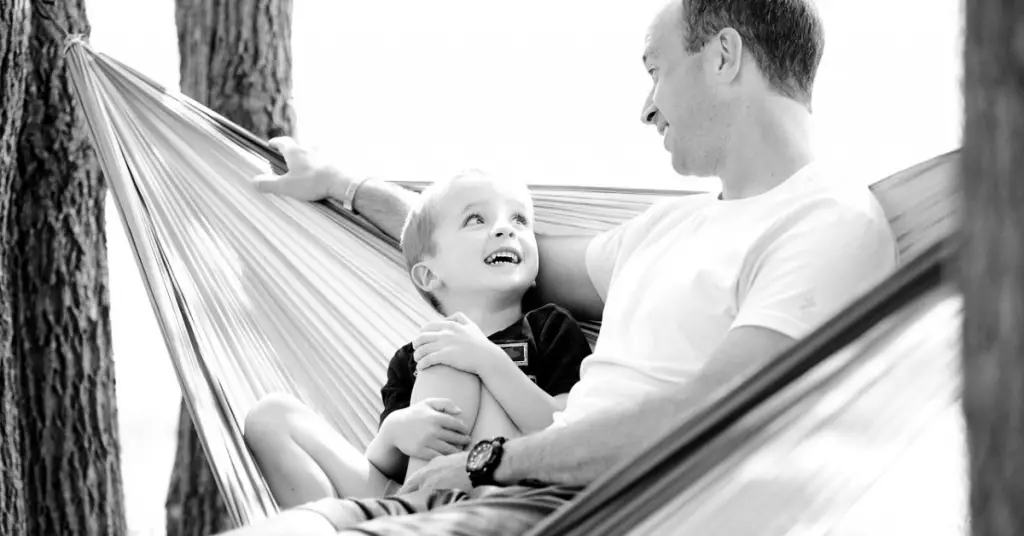
Amy goes into a lot of detail as to why this will be effective (linking it back to Adlerian psychology), but it makes so much sense.
In fact, it’s kind of one of those things that makes so much sense it can almost be devalued because you kind of think it is just plain obvious.
However, knowing something and doing it are two different things. For example, we do actually spend a good bit of one-to-one time with each of our two every night. We take turns to read to them before bed and then have a quick snuggle after lights out.
The difference, as Amy points out, is that we don’t ‘label’ that time. That is, we should expressly tell our kids that they are getting ‘special mommy and daddy time’ while you’re doing it. It’s that acknowledgement or ‘credit’ that makes the child realize they are valued and ties it all back to the 3 Adlerian principles.
Simple but brilliant. We were really impressed by what we’ve seen so far in Step 1. These ‘ah-ha’ moments are almost worth the admission price on their own.
So we were definitely excited about checking out the other six steps!
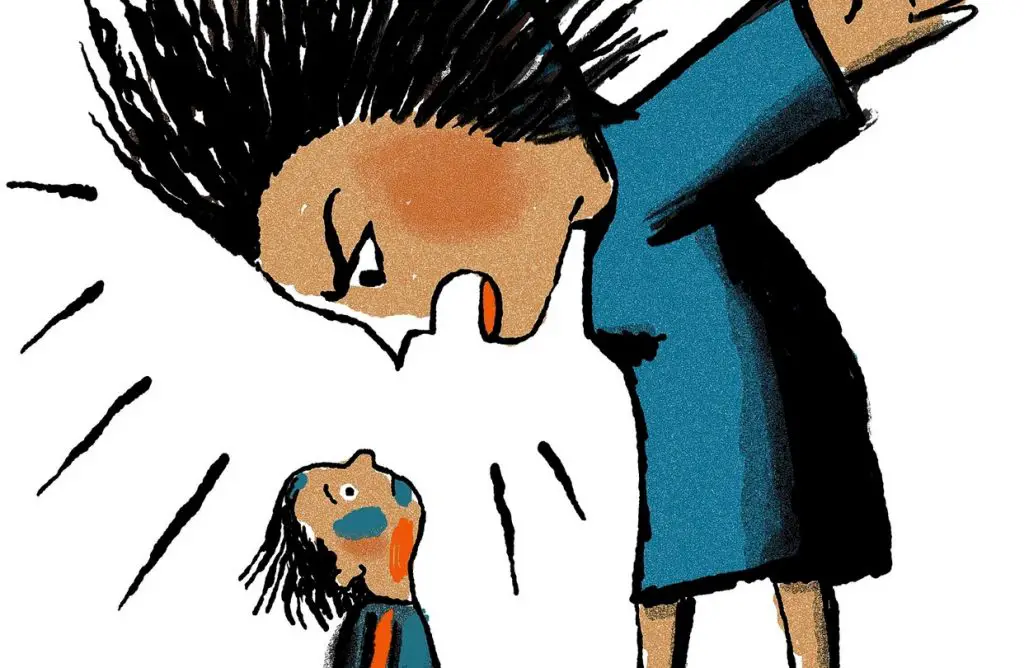
Step 2 – From Complaining To Contributing
There are 11 lessons in Step 2 (sub-titled Empower Your Kids To Be Confident, Capable, And Independent) – mostly videos but also a couple of quizzes.
This second session starts out with a short review of Step 1 – in the form of five “BIG IDEAS”. This was extremely useful actually, as it pushed home some of the learnings that weren’t quite registering properly from the first run-through.
After that, there’s no more preamble and we’re straight in to the core material of Step 2. [I’m beginning to appreciate Amy’s no-fluff, straight-to-the-point teaching style. It gives just enough detail to explain the point and then moves on – saves a lot of time faffing].
The first lesson in Step 2 talks about the ‘competent giant’ which is how our little ones perceive us – a giant compared to their tiny stature and extremely competent and always getting things right compared to their bumbling efforts (guess they’re not referring to teenagers at this point!!).
The lesson is one of the longer videos of the course and is a fly-on-the-wall view of a live seminar they did once. The role play is a unique perspective on how a child views the world and his relationship with his adult guardians.
It demonstrates the inherent imbalance of power between the parent and the child (the name Competent Giant says it all). All the child wants is to be belong and feel significant. When the competent giant yells at the tiny child, it is a lose-lose for both sides. Both the parent and the child are left feeling ‘defeated’ at the end of such an interaction.
Powerful stuff.
Step 2 goes on with important point after important point. This really is a content-packed course. One thing we found particularly helpful is the concept of ‘Praise versus Encouragement’. This tool is extremely simple yet extremely powerful. We were so impressed that it inspired us to write a dedicated article and free download on why parents should focus on encouragement over praise. Click the link if you want to check that out.
Those familiar with the concept of ‘fixed versus growth mindset’ will recognize and identify the core concepts of this tool. The video below gives some good examples, or you can head on over to our article.
Step 2 was another content-packed inspiration from Amy McCready.
Step 3 – Revolutionize Your Routines
I think if you’re aware enough to be reading an article about one of the leading Parenting Programs then it’s safe to assume that you understand the need for routine in a young child’s life. Is that fair?
In this step, Amy takes us through a journey to get our family routines running like clockwork – and backchat free!!
She begins with an overview of ‘power’ and how its dynamics affect family life. Again, calling on Adlerian Psychology she uses examples to make something that I hadn’t really thought of before blindingly obvious. That is the concept – “We can’t control another person. We can’t force people to do something without breaking their spirit or ending up with a huge power struggle. All we can control is our ourselves and the environment.”
Sounds obvious reading it back, but how many of us are guilty of trying to control the person (i.e. our children) first and getting frustrated when we get pushed back?
The tool Amy introduces to combat this problem is the ‘Decision Rich Environment’. That is, giving plenty of opportunity for kids to make positive decisions throughout the day.
In fact, whenever we can, we want to leave age-appropriate decisions up to our kids.
This allows parents to better choose their battles – and have more amenable, flexible kids when they do occur.
Here are some examples of positive choices:
- Would you like your blue towel or your yellow towel in your bath today vs you need to take a bath now
- Would you like me to soap you up now or would you like to do that yourself
- Would you like to empty the dishwasher first or take out the trash
- Would you like to do your homework before or after a snack
- Would you like to do your homework on the table in the kitchen or in your room
A choice around a task that has to be done gives a child a feeling of control.
But what if they refuse to make a choice? Or choose a different thing? Amy describes this as “exerting negative power”. Respond with your Calm voice (tool from Step 1), smile, and reply – “since you didn’t choose, I will choose for you”.
Step 3 was another value-packed session. Phew! There’s so much to cover in this course.
If you’ve heard enough of me wittering on and would like to hear from Amy herself, then check out her free trial class by clicking on the image below.
Otherwise, read on and we’ll go through the remaining steps.
Step 4 – From Power Struggles to Peace
This session is about giving kids ‘Positive Power’. That is, age-appropriate power, on your terms, that allows the child to feel validated and significant – but without undermining your overall role as the parent.
Amy looks at the motivation factors behind misbehavior and gives you tools necessary to dig them out by the root.
One of the most powerful lessons from this step is a tool called “Mistaken Goals of Behavior”.
A Mistaken Goal (so-called because the behavior is based on what the child thinks is true, not what is really true) is a child’s misguided attempt to find belonging and significance.
If a child doesn’t feel belonging and significance through positive, productive means, he/she will seek other ways to find attention and power. They are called Mistaken Goals because they represent a child’s mistaken belief about how he/she can find belonging and significance.
The four Mistaken Goals of Behavior are:
- Undue Attention
- Power
- Revenge
- Assumed Inadequacy
Pretty serious stuff!
There are some great tools to deal with this though. Such as:
- Ignore Undue Attention
- Avoid Special Service
- The Re-Do Tool
- Set Limits and Stick to Them
- Asked And Answered
Step 4 is a really in-depth session and covers some of the major issues with so-called ‘naughty’ children; most likely just acting up due to mistaken goals.
Positive Parenting Solutions is full chocker block of tools to help parents overcome power struggles – subtle or overt.
The Three Magic Words tool, for example, is a great one to stop children constantly nagging for something they want.
We’ve create a little mini-guide to that one. Check it out by clicking on the image.
Step 5 – Transforming Sibling Relationships – From Enemies to Besties
Unless you have an only child, then for sure, you’ll have experienced the ups and downs of sibling relationships.
How our hearts melt when they are lost in a game together, chitter chattering about something or nothing. We imagine them all grown up close brothers/sisters supporting each other with love through the challenges of life.
And then there’s the flip side….
When little Johnny’s piece of cake is a teeny, tiny inconceivably small amount bigger than little Jane’s.
Or when Jane has wacked John around the head for laughing at her attempt at a hand stand.
Sibling bonding and sibling rivalry is as old as Cain and Abel. (Although we’ll hope that our kids’ relationship turns out a little better than theirs did!!!).
Step 5 (like all of the positive parenting solutions course really) is packed with tools and strategies to make life more harmonious.
The session begins with Lesson 38 (yes, there’s really been that many already!) which is a hilarious ‘The New Wife’ video which gives a great insight as to how your tribe feel about each other.
Step 5 tells us five key things about parenting:
- Sibling rivalry is caused by ‘competition within the family’. Of course competition is always going to happen in any close human relationship, but Amy advises to reduce competitive tension with tools like Mind, Body and Soul Time (MBST) and reducing labels (see Praise Junkie)
- Don’t get in the middle of a fight. Leave siblings to resolve differences between themselves.
- Take time for training. Set rules for community living and keep teaching and reinforcing these rules. Families must also train up in using respectful communication, using “I Feel” statements and Using “Requests vs. Demands”.
- Helpful adult intervention. When, and only when, tools like Calm Voice, Community Rules, etc. have not worked, the adult should step in and mediate. But critically, without taking sides.
- “Either Or” – e.g. “Either you guys can figure out a nice way to share the Legos Or you both lose them for the rest of the day”.
One thing Amy stresses in this step is not to be too hard on yourself here. Conflict Resolution (which is what the role is when you think about it) is a complex skill taking a lifetime to perfect. Don’t expect to get it right the first time!
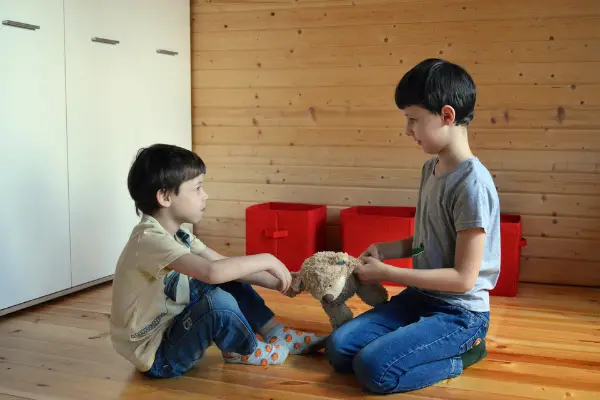
Step 6 – The Family Harmony Tool
There’s only one tool in Step 6. But it’s a big one and merges a lot of the tools already introduced into one ‘event’ – The Family Meeting.
Just to be clear, The Family Meeting isn’t a formal, sit-down-around-the-conference table event with an agenda and minutes! It is defined as, simply, “Time spent together as a family each week when we connect, solve problems, make decisions, and have fun.”
You may already be doing this in fact. For example, we like to eat all our meals together as much as possible but you know how life sometimes gets in the way – sports classes, play dates, work, what have you. However, we have Sunday dinner written in stone as our family meal each week. All that’s required is to mindfully apply Amy’s tools during the usual set time together.
Note:- We’ve gone against Amy’s advice a little here as she advises not to hold the family meeting over a meal. And we get that – eating can be a big distraction from talking -however, we’re going to give it a try and see how it goes. With our two eating is often the only thing that keeps them in their seats! LOL.
Amy advises to use the 5 W’s (Who, When, Where, Why and What) to turn a normal family event into a ‘Family Meeting’.
- Who – all of the nuclear family plus grandmothers, aunties, etc. if they are a normal part of your daily routine
- Where – at home in a safe environment but, ideally, not over a meal (sorry Amy!)
- When – weekly
- Why – time well spent. Family meetings give your kids a power-packed dose of voice and significance.
- What – share problems and ideas, compliments and appreciations, planning and organizing.
Step 6 goes into a bit more detail – planning and holding the family meeting, what the benefits are, and highlights some of the pitfalls to avoid.
Like a lot of what Amy teaches, this is just common sense really. It’s so obvious that ‘The Family Meeting’ would be a great parenting strategy that it makes you wonder why you didn’t think of it earlier!
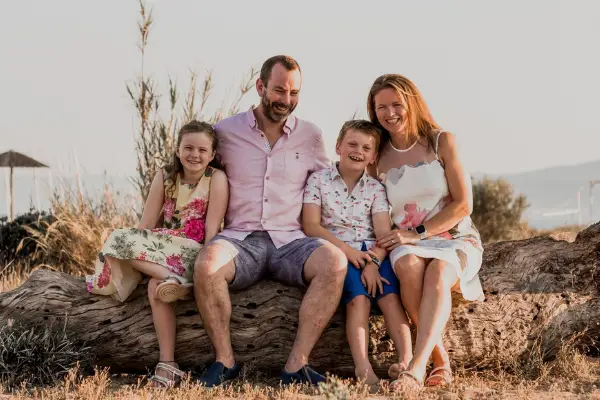
Step 7 – Your Future Success
Step 7 brings the course together into a final recap.
And for sure, backsliding is a big risk for any family implementing the Positive Parenting Solutions. While the tools and strategies taught in the course are often common sense and intuitive, they do require a mindful, deliberate application in order to be successful – and that’s not always easy.
So that’s why the seventh and final step concentrates on ‘keeping the tools fresh’; making sure you don’t get sucked back down into the default yelling mode you (and your family) have been practicing for so long.
Pat yourself on the back though! You’ve made it to Step 7 and, even if you only apply half of what you’ve learned, you’ll be a much better parent than you were before.
Positive Parenting Solutions Review
We’ve got to admit, it was a lot of work, time, and effort to get through all 49 lessons of Amy McCready’s Positive Parenting Solutions program.
The million dollar question is – was it worth it?
The answer has to be 100% YES!
We’ve learned so much in what was, in truth, a quite quick run-through of the course that we’re definitely going to go back and review it again more carefully and in more depth.
Our advice to anyone signing up for the course would be to take it at your own pace. Don’t feel pressured to get through it as fast as you can.
The Tools and Tips come thick and fast and, even from Step 1, Lesson 1, you’ll be learning things to apply into your family life.
If you try to do too much too soon, your family is going to get overwhelmed and it will be counter-productive.
But a short one-sentence summary of Positive Parenting Solutions would be “fantastic, actionable hacks that can make family life so much easier, simpler, and more harmonious”.
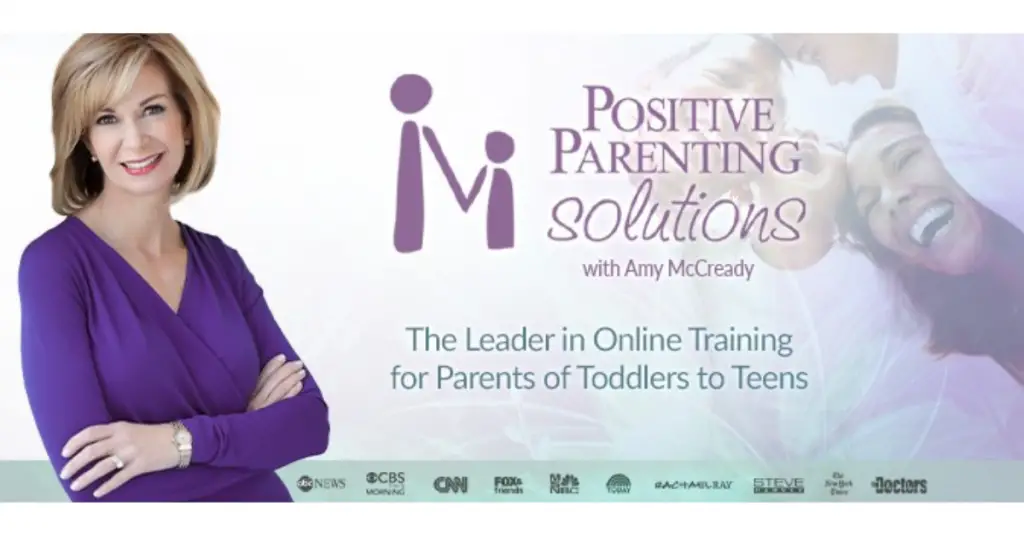
Positive Parenting Solutions – Costs and Sign Up
PPS has 3 membership levels – Gold, Silver, and Bronze – ranging in price from $199 to $350.
However, at time of writing, they have a 10% off a free upgrade offer (click here to see if that is still good) meaning that you can get Silver for $199 and Gold for $249.
We went for the Gold as it gives you access to so much more. Such as:
- Live coaching with Amy (priceless!)
- Lifetime access to the course materials
- Probably best of all, a private Facebook community which, in itself, is packed with great advice and tips and supportive fellow parents who’ve all been on the same journey we have
We have no hesitation to recommend Amy McCready’s Positive Parenting Solutions course to parents who are looking to achieve more balance and harmony in their family lives and to bring up more well-rounded children.
Granted it’s not cheap. But it will pay you back many times over in time saved and stress reduced.
To give it a try, we recommend you sign up for one of the free coaching classes that Amy regularly puts out online.
You can sign up by clicking the image below. There’s no fee and obligation required for the free class so we urge you to give it a try.
There’s nothing to lose and a huge amount to gain!
If you’re looking for a class to improve your parenting, there are countless online parenting courses to consider.
You may also be interested in the Conscious Parenting Master Class by Dr. Shefali Tsabary.
Related Articles:

Michael Oliver
Father of two lovely and special children. I'm an engineer (electrical) by trade and have worked at many a blue chip organization in the past. From Ford Motor Company to Airbus to Wyeth Pharmaceuticals to the UK National Health Service I've had a pretty diverse working life. After completing my MBA I wanted to break away from the corporate 'cubicle' so I founded Stuff4Tots as a means of being at home for my family and creating a future for us all.
Now as CEO of Stuff4Tots I bring together my expertise as a parent, a husband and a professional to serve fellow parents providing useful and relevant information and products to new families.
